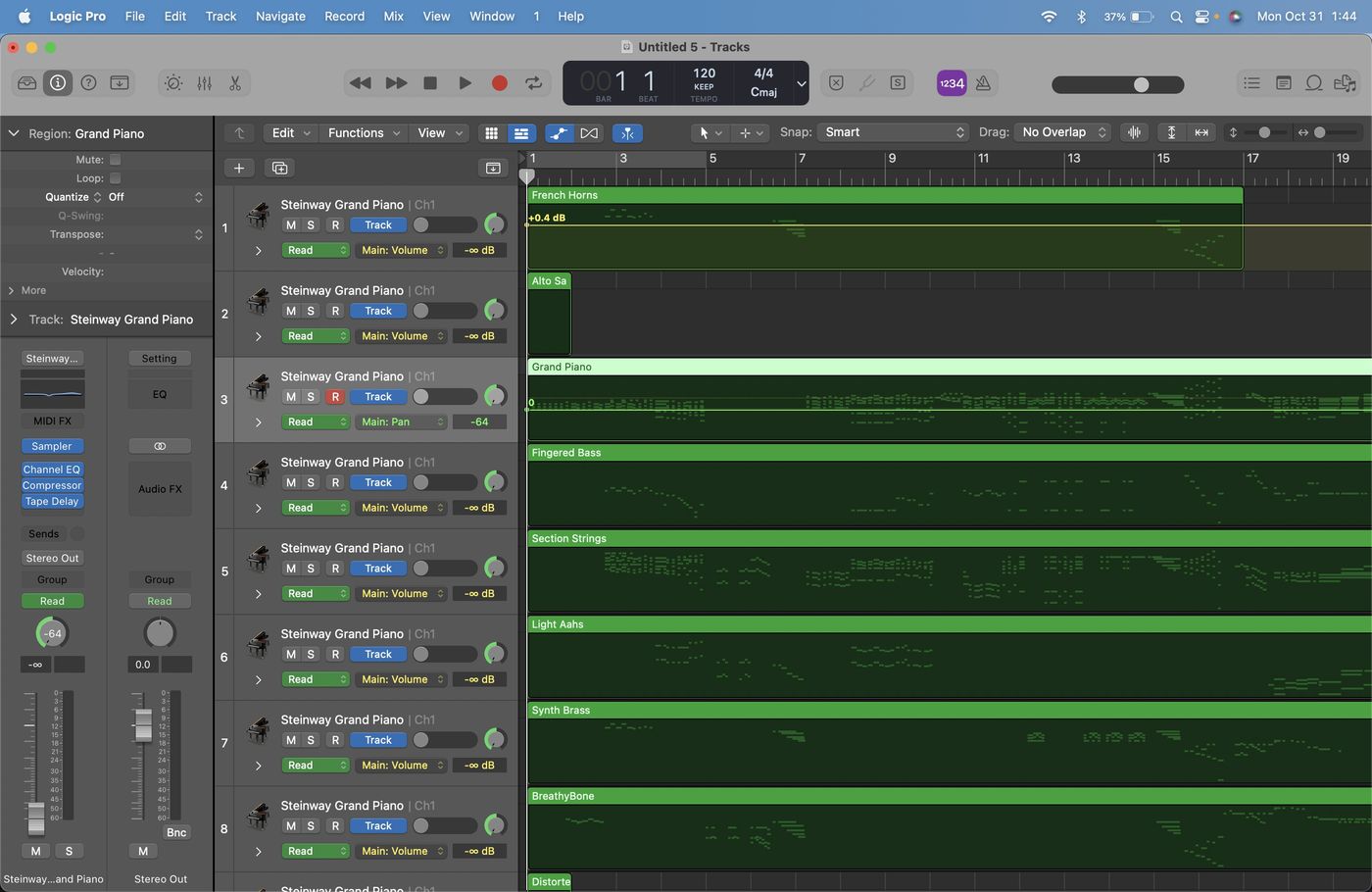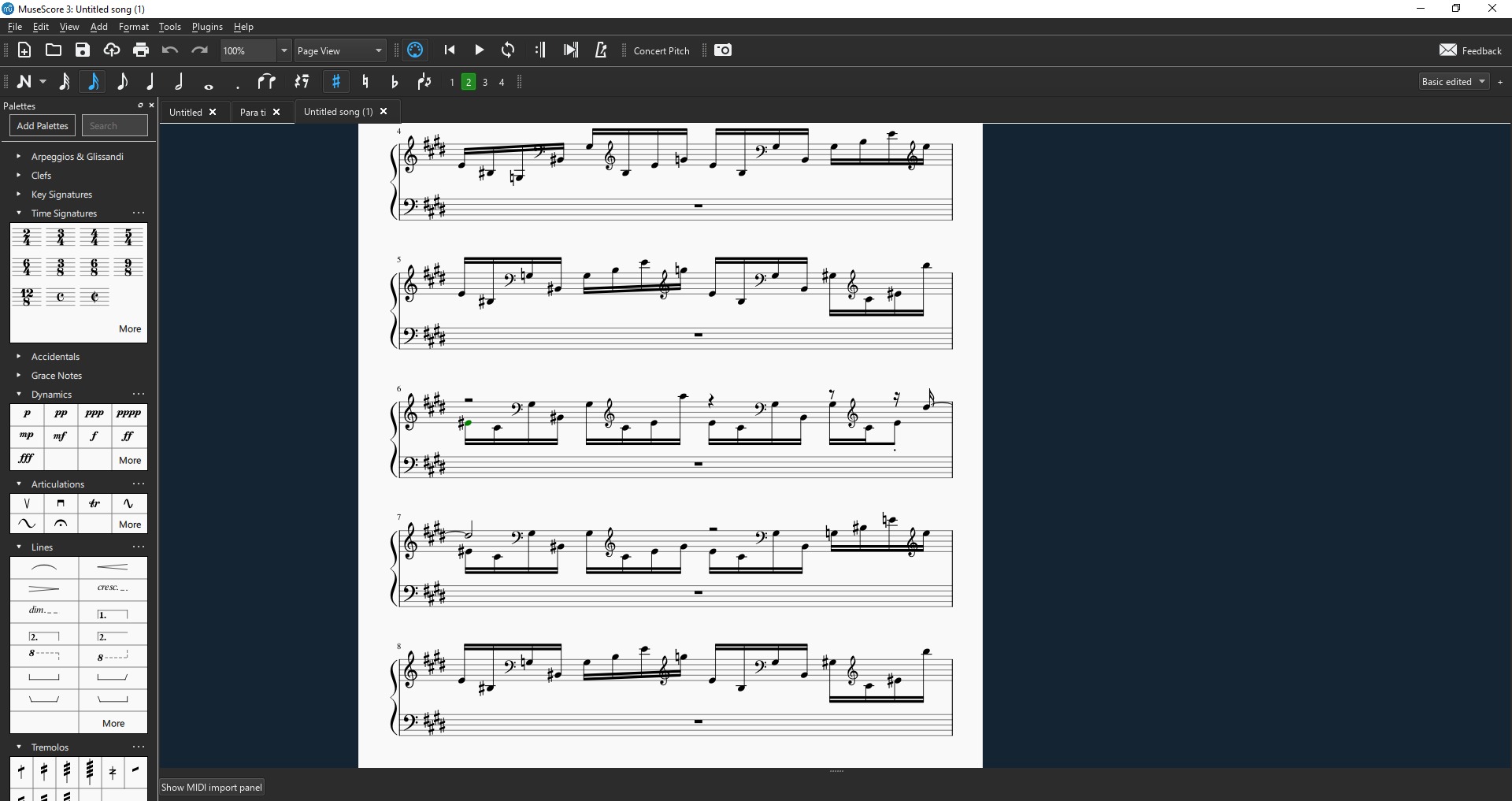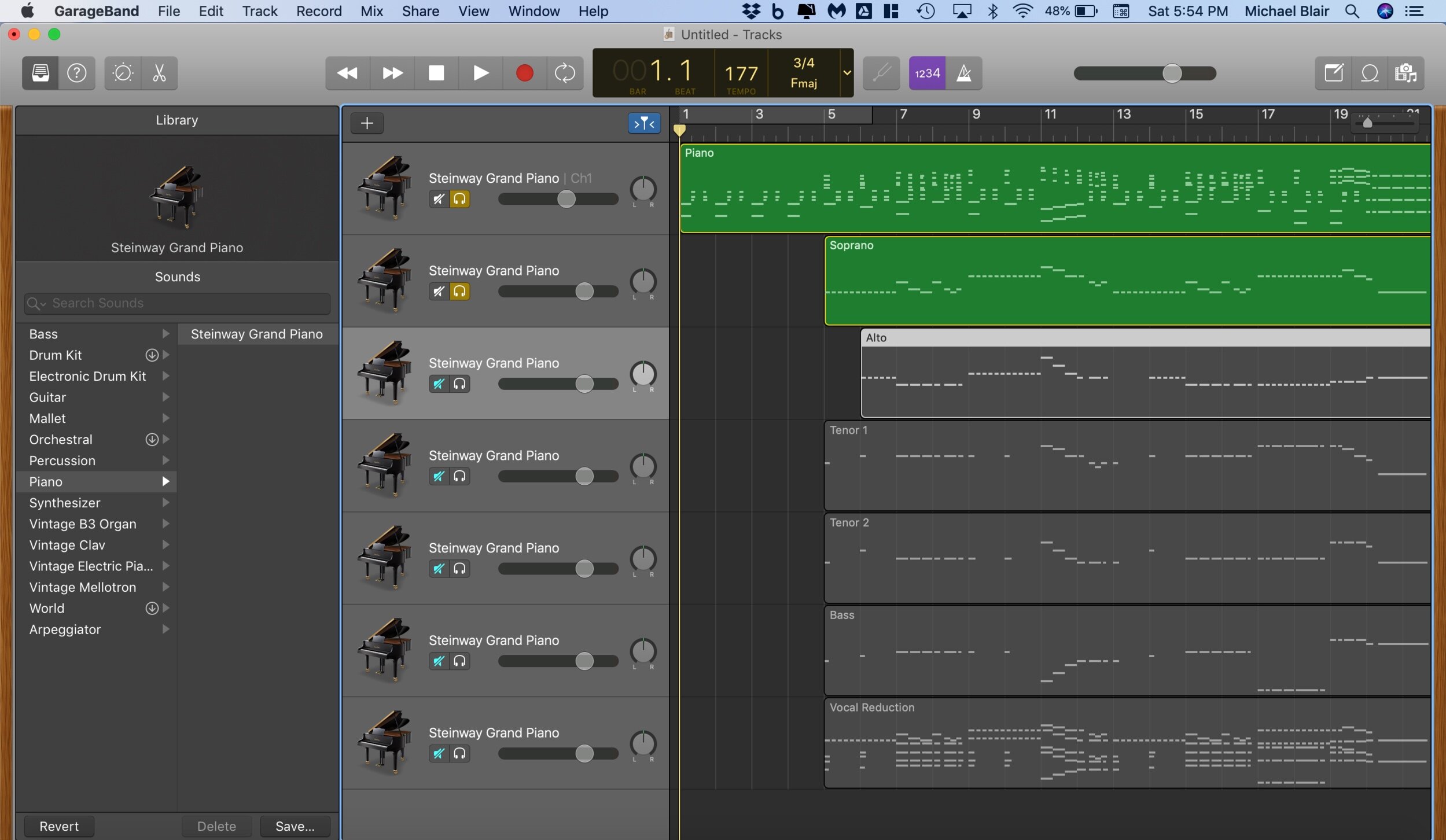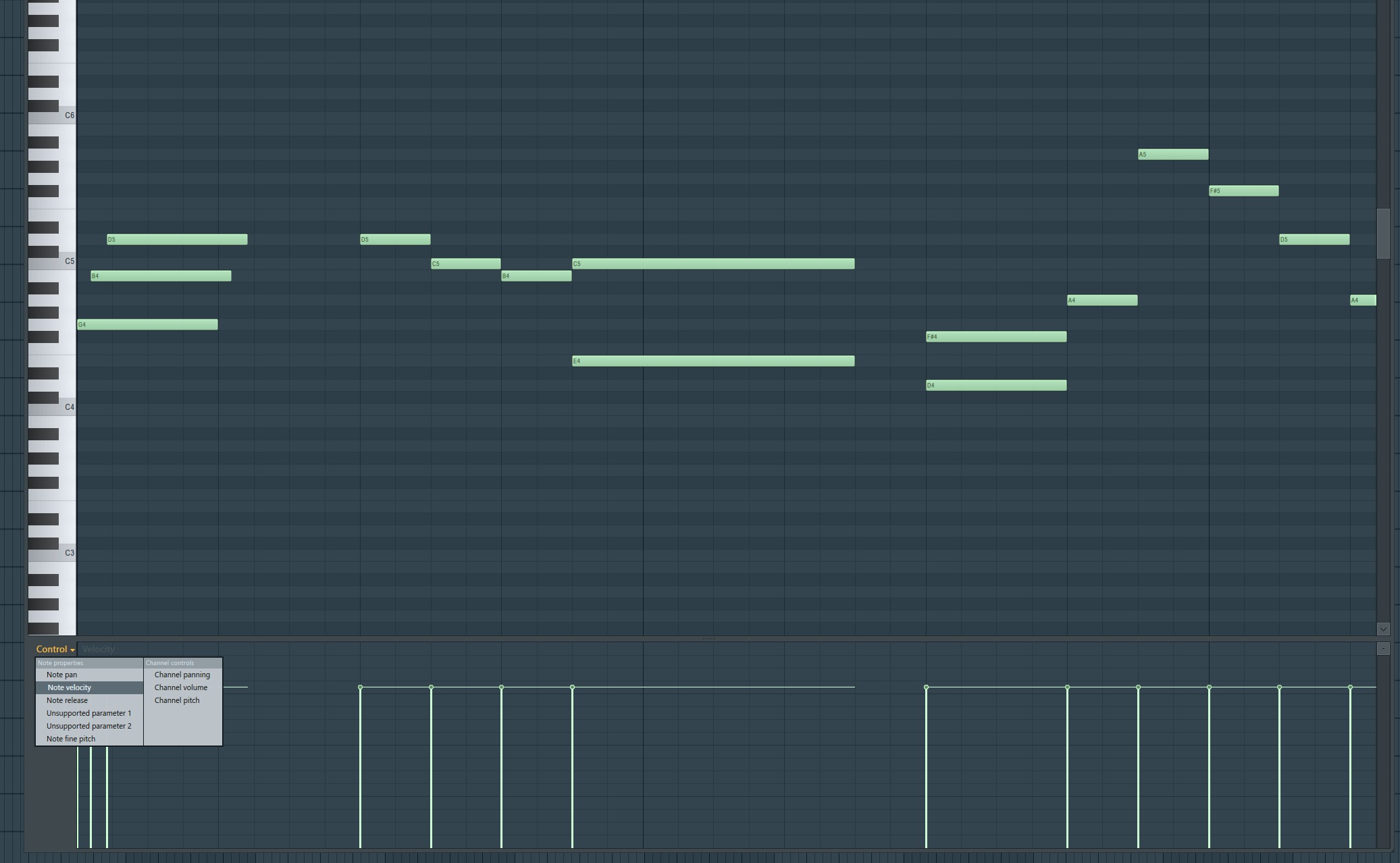Home>Production & Technology>MIDI>How To Play MIDI Files
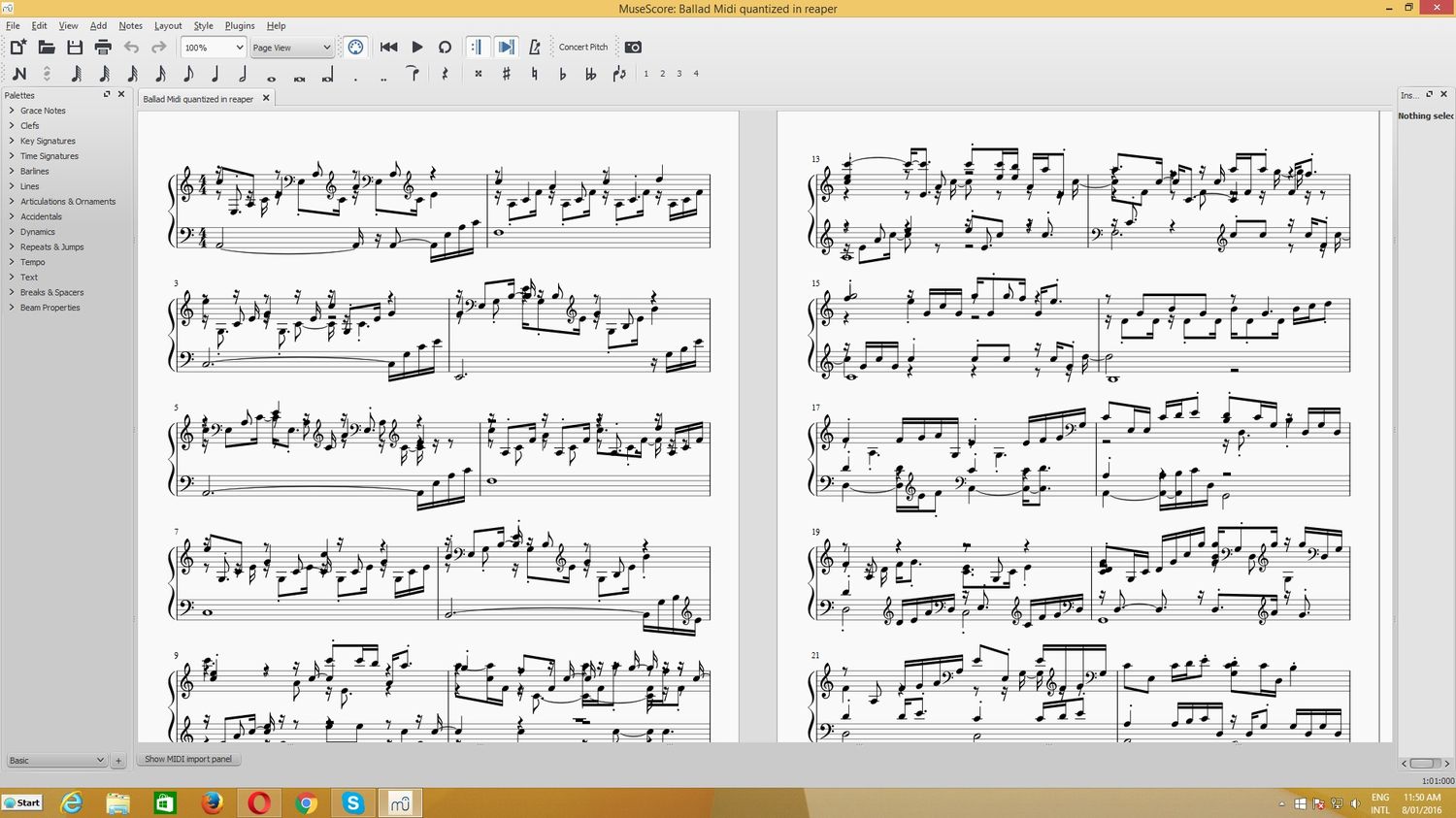

MIDI
How To Play MIDI Files
Modified: February 22, 2024
Learn how to play MIDI files and create music using MIDI technology. Discover MIDI file players, software, and tips for MIDI file playback.
(Many of the links in this article redirect to a specific reviewed product. Your purchase of these products through affiliate links helps to generate commission for AudioLover.com, at no extra cost. Learn more)
Table of Contents
Introduction
MIDI files have been a staple in the world of music for decades, serving as a versatile and efficient means of storing musical data. Whether you're a musician, a music enthusiast, or simply someone looking to explore the realm of digital music, understanding how to play MIDI files is a valuable skill. In this comprehensive guide, we will delve into the intricacies of MIDI files and equip you with the knowledge to effortlessly play them on various devices.
MIDI, which stands for Musical Instrument Digital Interface, revolutionized the music industry by providing a standardized protocol for electronic musical instruments, computers, and other audio equipment to communicate with each other. Unlike audio files, which capture sound in a waveform format, MIDI files store musical notes, tempo, pitch, and other musical parameters as digital instructions. This unique characteristic allows MIDI files to be manipulated and played back with exceptional flexibility.
As we embark on this journey, we will unravel the mysteries of MIDI files, explore the diverse range of MIDI players available, and provide step-by-step guidance on playing MIDI files on both computers and mobile devices. By the end of this guide, you will possess the expertise to seamlessly enjoy the captivating melodies and harmonies encapsulated within MIDI files.
So, let's dive into the enchanting realm of MIDI files and unlock the potential for boundless musical exploration!
Understanding MIDI Files
MIDI, short for Musical Instrument Digital Interface, is a versatile and widely used file format that revolutionized the way music is created, recorded, and played back. Unlike traditional audio files, which capture sound in a waveform format, MIDI files store musical data in a unique manner. Instead of recording actual sounds, MIDI files contain digital instructions that specify musical notes, tempo, pitch, and other parameters. This distinctive characteristic allows MIDI files to be manipulated and played back with exceptional flexibility, making them a fundamental component of modern music production and playback.
One of the key advantages of MIDI files is their compact size. Since MIDI files only contain digital instructions rather than actual audio data, they are significantly smaller in size compared to audio files. This makes MIDI files highly efficient for storage and transmission, allowing for quick and seamless sharing of musical compositions and arrangements.
Moreover, MIDI files are incredibly versatile and compatible with a wide range of musical instruments and devices. Whether it's electronic keyboards, synthesizers, drum machines, or computer software, MIDI files can be used to control and synchronize musical playback across diverse platforms. This interoperability has made MIDI files an integral part of music production, enabling seamless integration between different musical equipment and software applications.
Another remarkable aspect of MIDI files is their editability. Unlike audio recordings, which are fixed in terms of musical content once they are captured, MIDI files can be easily edited and manipulated. This means that musicians and producers can adjust the tempo, change the instrumentation, or modify individual notes within a MIDI file, offering unparalleled creative freedom and flexibility in music composition and arrangement.
In essence, MIDI files serve as a bridge between musical creativity and technological innovation. They empower musicians, producers, and music enthusiasts to explore new horizons in music production and playback, offering a wealth of possibilities for expressing musical ideas and bringing compositions to life. Understanding the unique characteristics and capabilities of MIDI files is essential for anyone looking to delve into the captivating world of digital music, unlocking a realm of creativity and boundless musical exploration.
Choosing a MIDI Player
When it comes to playing MIDI files, selecting the right MIDI player is crucial to ensure a seamless and enjoyable playback experience. With a myriad of options available, ranging from software-based MIDI players to hardware MIDI devices, choosing the most suitable MIDI player can significantly impact your interaction with MIDI files.
Software-Based MIDI Players
Software-based MIDI players are among the most popular choices for playing MIDI files on computers and mobile devices. These applications are designed to interpret and render MIDI data, allowing users to listen to MIDI compositions with high fidelity and precision. Many software-based MIDI players offer advanced features such as customizable instrument libraries, tempo adjustments, and MIDI file editing capabilities, providing users with a comprehensive set of tools for musical exploration.
Hardware MIDI Devices
For musicians and music enthusiasts seeking a more tactile and immersive MIDI playback experience, hardware MIDI devices offer a compelling solution. MIDI-compatible electronic keyboards, synthesizers, and drum machines serve as versatile MIDI players, allowing users to connect MIDI files and control the playback using physical interfaces. These devices often feature high-quality sound engines and expressive performance controls, enhancing the authenticity and richness of MIDI file playback.
Online MIDI Players
In the era of cloud-based technologies, online MIDI players have emerged as convenient tools for instant MIDI file playback. These web-based platforms enable users to upload MIDI files and play them directly within a web browser, eliminating the need for dedicated software installations. Online MIDI players are particularly useful for quick access to MIDI file playback, making them ideal for casual listening and musical exploration on the go.
Mobile MIDI Player Apps
With the prevalence of smartphones and tablets, mobile MIDI player apps have become increasingly popular among music enthusiasts. These apps offer a portable and versatile solution for playing MIDI files on mobile devices, allowing users to enjoy their favorite MIDI compositions anytime, anywhere. Mobile MIDI player apps often feature intuitive interfaces, extensive playback controls, and integration with cloud storage services, catering to the diverse needs of mobile users.
Considerations for Choosing a MIDI Player
When selecting a MIDI player, it's essential to consider factors such as compatibility, feature set, user interface, and audio quality. Additionally, evaluating the device or platform on which the MIDI player will be used is crucial for ensuring seamless integration and optimal performance.
By carefully evaluating the available options and considering individual preferences and requirements, users can choose a MIDI player that aligns with their specific needs, whether it's for casual listening, music production, or live performance. Ultimately, the right MIDI player can elevate the experience of playing MIDI files, unlocking the full potential of digital music playback and creative exploration.
Playing MIDI Files on a Computer
Playing MIDI files on a computer opens up a world of musical possibilities, allowing users to immerse themselves in the captivating realm of digital music with ease and flexibility. Whether you're a musician, a music producer, or simply an avid listener, leveraging the capabilities of a computer for MIDI file playback offers a seamless and customizable experience.
Software-Based MIDI Players for Computers
One of the most common methods for playing MIDI files on a computer involves utilizing software-based MIDI players. These applications are designed to interpret MIDI data and render it into audible musical output. With a diverse range of software-based MIDI players available for various operating systems, users can choose from an array of options tailored to their specific preferences and requirements.
MIDI-Compatible Music Production Software
For musicians and music producers, digital audio workstations (DAWs) and music production software equipped with MIDI playback capabilities serve as powerful tools for playing and manipulating MIDI files on a computer. These applications offer comprehensive features for MIDI file playback, including track arrangement, tempo adjustments, instrument selection, and MIDI data editing. Additionally, MIDI-compatible music production software allows users to seamlessly integrate MIDI files into their creative workflows, facilitating the composition, arrangement, and production of musical compositions with unparalleled flexibility.
Virtual Instrument Plugins
In the realm of computer-based music production, virtual instrument plugins, also known as VST instruments, play a pivotal role in MIDI file playback. These software instruments emulate a wide range of musical sounds and timbres, enabling users to load MIDI files and trigger virtual instrument sounds with exceptional realism and expressiveness. By harnessing the power of virtual instrument plugins within compatible music production software, users can explore a vast sonic palette and bring MIDI compositions to life with stunning authenticity.
Standalone MIDI Player Applications
In addition to music production software, standalone MIDI player applications tailored specifically for MIDI file playback are available for computers. These dedicated MIDI players offer streamlined interfaces, intuitive controls, and high-quality playback engines, providing users with a focused and efficient means of enjoying MIDI compositions without the complexities of full-fledged music production environments. Standalone MIDI player applications are ideal for casual listening, music analysis, and educational purposes, offering a straightforward and immersive MIDI playback experience.
Integration with MIDI-Compatible Hardware
Furthermore, computers equipped with MIDI interfaces or USB MIDI controllers can seamlessly integrate with external MIDI-compatible hardware devices, such as electronic keyboards, synthesizers, and MIDI controllers. This integration allows users to connect MIDI files to external hardware and control the playback using physical interfaces, enhancing the interactive and tactile aspects of MIDI file playback on a computer.
In essence, playing MIDI files on a computer offers a rich and dynamic musical experience, empowering users to explore, create, and enjoy music in a digital landscape filled with endless possibilities. By leveraging the capabilities of software-based MIDI players, music production software, virtual instrument plugins, standalone MIDI player applications, and MIDI-compatible hardware, users can unlock the full potential of MIDI file playback on a computer, fostering creativity and musical expression in the digital age.
Playing MIDI Files on a Mobile Device
In today's mobile-centric world, the ability to play MIDI files on a mobile device opens up a realm of musical exploration and creativity, allowing users to indulge in captivating melodies and harmonies on the go. Whether you're a music enthusiast, a budding musician, or a seasoned producer, leveraging the capabilities of a mobile device for MIDI file playback offers unparalleled convenience and flexibility.
Mobile MIDI Player Apps
The proliferation of mobile MIDI player apps has empowered users to transform their smartphones and tablets into versatile platforms for MIDI file playback. These dedicated apps are designed to interpret and render MIDI data, providing users with intuitive interfaces, extensive playback controls, and seamless integration with cloud storage services. Whether it's exploring intricate musical arrangements or simply enjoying favorite MIDI compositions, mobile MIDI player apps offer a portable and immersive experience for MIDI file playback on the go.
Integration with MIDI-Compatible Hardware
Furthermore, the advent of MIDI-compatible hardware accessories for mobile devices has expanded the possibilities for MIDI file playback. MIDI controllers, portable synthesizers, and MIDI-compatible instrument interfaces designed for mobile use enable users to connect their mobile devices to external hardware and control MIDI file playback with tactile precision. This integration bridges the gap between the digital and physical realms, offering a compelling avenue for expressive and interactive MIDI file playback on mobile devices.
Seamless Cloud Integration
With the seamless integration of cloud storage services into mobile MIDI player apps, users can effortlessly access and play MIDI files stored in cloud-based repositories. This feature not only facilitates convenient access to MIDI compositions from anywhere with an internet connection but also streamlines the process of managing and organizing MIDI files on mobile devices. The ability to seamlessly synchronize MIDI file libraries across multiple devices further enhances the accessibility and portability of MIDI file playback in a mobile context.
On-the-Go Musical Exploration
The portability and versatility of mobile devices make them ideal companions for on-the-go musical exploration. Whether it's capturing musical ideas, analyzing intricate MIDI compositions, or simply immersing oneself in the world of digital music, playing MIDI files on a mobile device offers a dynamic and engaging experience. The ability to enjoy high-quality MIDI playback anytime, anywhere empowers users to stay connected with their musical passions and inspirations, fostering a seamless and immersive musical journey in the palm of their hands.
In essence, playing MIDI files on a mobile device transcends the boundaries of traditional music playback, offering a gateway to boundless musical creativity and expression. With the convergence of mobile technology and MIDI file playback, users can embark on a captivating musical odyssey, unlocking the transformative power of digital music in the palm of their hands.
Troubleshooting MIDI File Playback Issues
Playing MIDI files is a captivating experience that immerses users in the realm of digital music. However, encountering playback issues can disrupt this immersive journey. When facing challenges with MIDI file playback, troubleshooting techniques can help resolve common issues and ensure a seamless musical experience.
Check MIDI File Compatibility
One of the first steps in troubleshooting MIDI file playback issues is to verify the compatibility of the MIDI file with the selected MIDI player or device. Ensure that the MIDI file format is supported and that any associated instruments or sound libraries are accessible to the MIDI player. Incompatibility between the MIDI file and the playback environment can lead to unexpected behavior and playback irregularities.
Verify MIDI Device Connectivity
For users utilizing external MIDI-compatible hardware devices, such as electronic keyboards or synthesizers, verifying the connectivity and configuration of MIDI devices is essential. Check the physical connections, MIDI channel settings, and device compatibility to ensure proper communication between the MIDI file and the external hardware. Additionally, inspect any MIDI interface or USB connections for potential issues that may affect playback.
Adjust MIDI Channel Assignments
In cases where MIDI files contain multiple instrument tracks or channels, incorrect MIDI channel assignments can result in distorted playback or silent voices. Verify that the MIDI player or device is set to receive and interpret MIDI data from the appropriate channels within the MIDI file. Adjusting MIDI channel assignments within the playback environment can rectify issues related to instrument mapping and channel allocation.
Troubleshoot Audio Output Settings
Issues with audio output settings, such as volume levels, audio routing, or sound card configurations, can impact the quality and clarity of MIDI file playback. Ensure that the audio output devices, whether internal or external, are correctly configured and operational. Troubleshooting audio output settings can address issues such as distorted sound, low volume, or audio artifacts during MIDI file playback.
Update MIDI Player Software
Software-based MIDI players may encounter playback issues due to outdated software versions or compatibility issues with the operating system. Updating the MIDI player software to the latest version and ensuring compatibility with the underlying platform can resolve performance-related issues and enhance the stability of MIDI file playback.
By employing these troubleshooting techniques, users can address common MIDI file playback issues and restore the seamless and immersive musical experience associated with MIDI files. Whether it involves verifying compatibility, adjusting MIDI device settings, or optimizing audio output configurations, troubleshooting empowers users to overcome challenges and fully enjoy the captivating melodies encapsulated within MIDI compositions.

